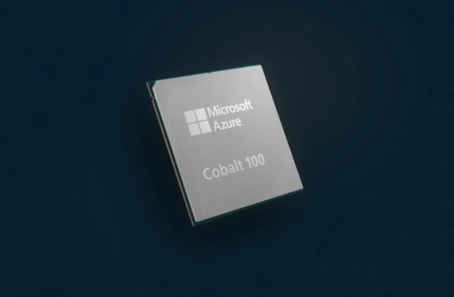A public sample of Microsoft’s custom Cobalt 100 chips will be given to the public at its Build conference next week,
CEO of Microsoft’s Cloud and AI group, Scott Guthrie, directly compared Cobalt to AWS’s Graviton chips, which developers have been able to use for a number of years, in a meeting for analysts before Build. Guthrie said that Microsoft’s chips will be 40% faster than other ARM chips on the market. The new chips are already being used by Adobe, Snowflake, and other companies.
Microsoft first talked about its Cobalt chips in November of last year. These 64-bit chips have 128 cores and are based on the Arm design.
Microsoft will also offer AMD’s MI300X processors to Azure clients next week, along with the Cobalt chips. Even though AMD makes a lot of GPUs, it has been behind Nvidia in AI for a long time. But now that the big cloud providers are looking for cheaper chips than Nvidia’s, and AMD has started to make progress by providing better software support, these new chips are also in high demand.
It was called the “most cost-effective GPU out there right now for Azure OpenAI” by Guthrie.
We also learned that Microsoft will lower the cost of getting and running large language models at Build next week. It’s still not clear what that will look like, though.
A new “real-time intelligence system” that lets real-time data flow into Fabric, Microsoft’s data analytics system, will also be put into testing. This system will be able to connect to Kafka natively and also work with AWS Kinesis and Google Cloud’s Pub/Sub data streaming systems.
Microsoft will also say that it is working with Snowflake. Along with Databricks’ Parquet, Fabric will now accept Snowflake’s Iceberg format. This will allow “seamless interoperability with Snowflake and enable any data that’s in Snowflake to show up in Fabric and vice versa.”
Also Read: Microsoft Doesn’t Let Us Police Use a Business Ai Tool for Facial Recognition
Hey Copilot fans! Microsoft is going to release a new feature that will let developers use natural language to control their Azure resources right from Copilot. Guthrie said, “That will make it possible for an even tighter developer loop with natural language across your development stack and Azure.” That system is built on top of a standard way to add on to things, so other service providers will be able to connect to it and offer the same features.
What do you say about this story? Visit Parhlo World For more.


